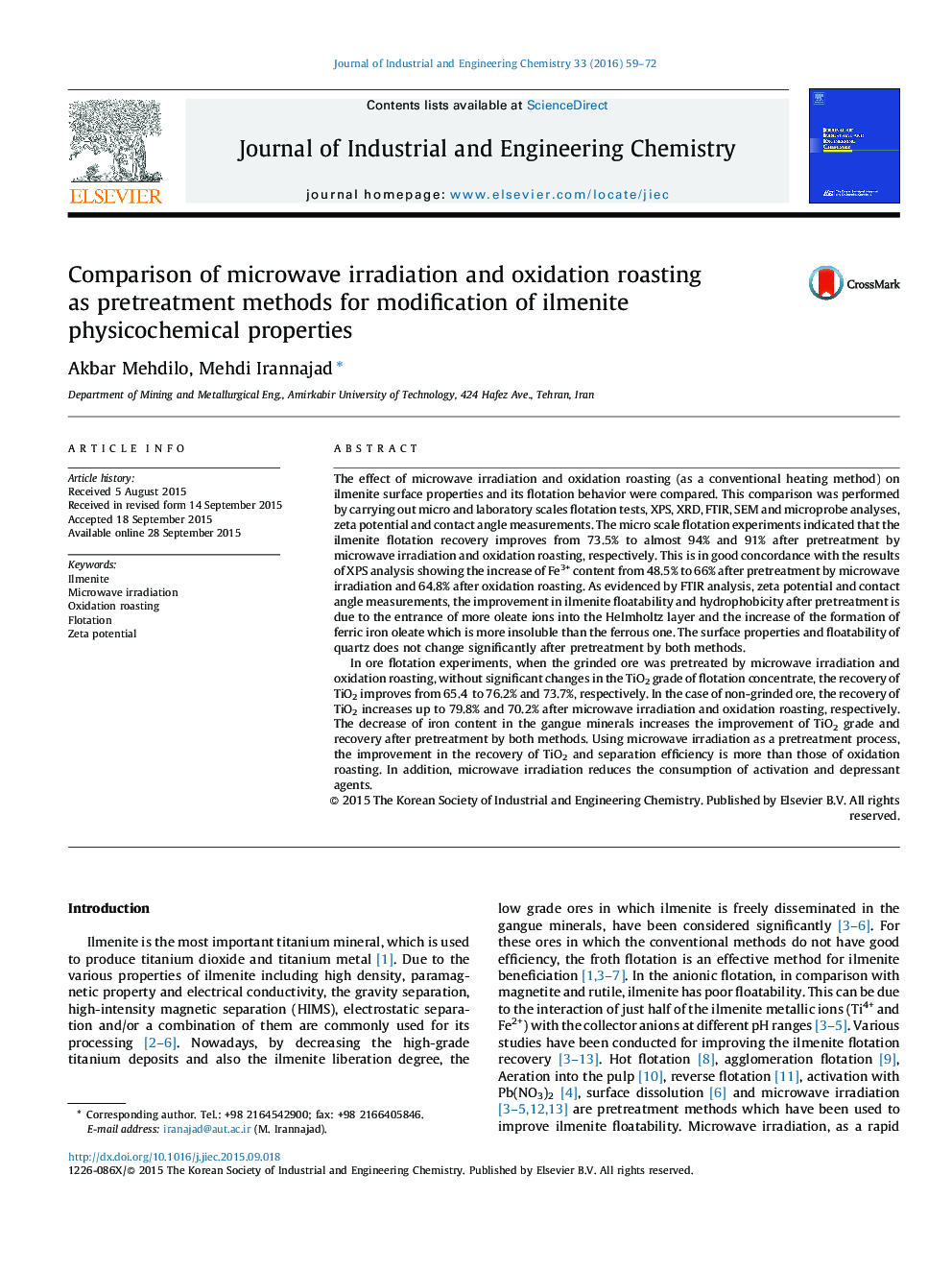| Article ID | Journal | Published Year | Pages | File Type |
|---|---|---|---|---|
| 226834 | Journal of Industrial and Engineering Chemistry | 2016 | 14 Pages |
•Microwave irradiation improves ilmenite floatability more than oxidation roasting one.•The less iron containing gangues the more improvement in ilmenite flotation recovery.•Improvement of ilmenite flotation for coarse size ores is higher than fine size ones.•Microwave irradiation increases liberation degree of ilmenite paricles.•Microwave irradiation decreases consumption of flotation reagents.
The effect of microwave irradiation and oxidation roasting (as a conventional heating method) on ilmenite surface properties and its flotation behavior were compared. This comparison was performed by carrying out micro and laboratory scales flotation tests, XPS, XRD, FTIR, SEM and microprobe analyses, zeta potential and contact angle measurements. The micro scale flotation experiments indicated that the ilmenite flotation recovery improves from 73.5% to almost 94% and 91% after pretreatment by microwave irradiation and oxidation roasting, respectively. This is in good concordance with the results of XPS analysis showing the increase of Fe3+ content from 48.5% to 66% after pretreatment by microwave irradiation and 64.8% after oxidation roasting. As evidenced by FTIR analysis, zeta potential and contact angle measurements, the improvement in ilmenite floatability and hydrophobicity after pretreatment is due to the entrance of more oleate ions into the Helmholtz layer and the increase of the formation of ferric iron oleate which is more insoluble than the ferrous one. The surface properties and floatability of quartz does not change significantly after pretreatment by both methods.In ore flotation experiments, when the grinded ore was pretreated by microwave irradiation and oxidation roasting, without significant changes in the TiO2 grade of flotation concentrate, the recovery of TiO2 improves from 65.4 to 76.2% and 73.7%, respectively. In the case of non-grinded ore, the recovery of TiO2 increases up to 79.8% and 70.2% after microwave irradiation and oxidation roasting, respectively. The decrease of iron content in the gangue minerals increases the improvement of TiO2 grade and recovery after pretreatment by both methods. Using microwave irradiation as a pretreatment process, the improvement in the recovery of TiO2 and separation efficiency is more than those of oxidation roasting. In addition, microwave irradiation reduces the consumption of activation and depressant agents.
Graphical abstractFigure optionsDownload full-size imageDownload as PowerPoint slide
